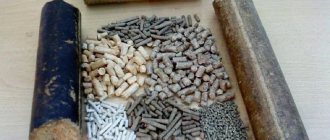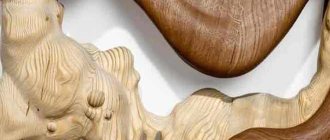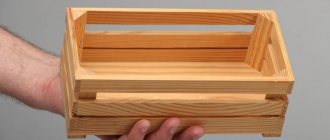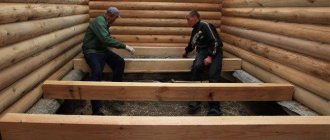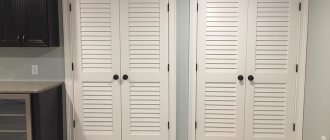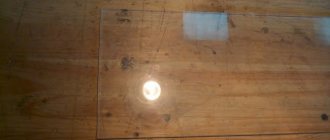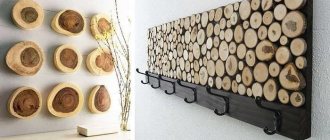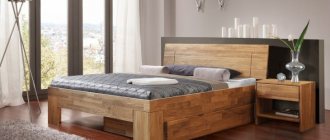What is this - patina
People who collect coins and antiques are constantly faced with the fact that antique objects made of wood, precious metals, bronze and brass, which were stored in good conditions, have a visually visible patina of antiquity. In professional language, such a coating is called patina. There is patina on furniture, ancient coins and household items.
Among specialists, objects with an intact layer of patina are valued several times higher than products that have been cleared of it, even if they shine like new. In fact, patina in this case acts as a kind of standard confirming that the item has a solid history.
Owning antique furniture, which can be immediately identified by its characteristic layer of microcracks and darkening, gives a special status to the owners. It is proudly shown to guests, with pleasure telling the history of the set. Therefore, such furniture arouses such interest among buyers. However, not everyone has the opportunity to make such expensive purchases.
Taking this into account, designers have developed special technologies. Artificial aging of wood is no longer a problem. Patination of furniture, performed by professional craftsmen, allows you to create real masterpieces from inexpensive materials.
The comfort of wood and antiquity creates a pleasant atmosphere in the kitchen
You can make a patina either on solid wood or make patinated MDF facades. The quality of workmanship is so high that few will be able to distinguish a fake. Looking at a kitchen set, a person is sure that it is old wood until he opens the door. Only then does he discover that only the facades have a patina, and the rest of the structure is quite modern.
Today, designers can artificially age wood so much that they can create living rooms and kitchens in the Provence style with high reliability. The white patina and light abrasions applied to kitchen fronts allow people to create a small corner of the French countryside in their home.
Application of patina
Patination, as an artificial aging process for a product, is used in various fields.
The use of the artificial aging method is the breath of a new style
Types and methods of applying patina can vary greatly from each other.
At the same time, furniture manufacturers have catalogs of the textures of various trees, which describe patination methods.
In furniture production, there are two technologies for applying patina to wooden parts.
The types of patina differ depending on the paints and materials used, as well as the surface on which they are applied. They also depend on the method of applying paint to the facade.
Simple patination
Simple artificial aging of facades can be done with your own hands.
This is the easiest way to do patination with your own hands. A basic paint composition is applied to the front side of the façade blank made of laminated MDF or solid wood. It should level the surface and form a base layer. After the applied composition has dried, it is carefully sanded using sandpaper. In this case, the patina for wood will play the role of a covering composition for the paint. The level of abrasiveness and force must be adjusted depending on the required pattern. Finally, the surface must be coated with a special colorless matte varnish.
Method using bronze, gold and silver
This is how a kitchen patina is processed which has no gloss. The surfaces to be treated must have a textured surface. Since gold, silver or bronze is applied as an additional layer, the main background must be prepared in advance and have a matte finish. Additional paints are applied to protruding parts. After drying, these surfaces are also lightly sanded. Antiquity does not imply bright shine.
Patination and craquelure
Behind these words lies a more complex process of artificial aging. It is necessary to achieve the appearance of cracks and the formation of a “patina” of antiquity. Bevel varnish is applied in layers. In this case, the next layer is applied to the previous one that has not yet completely dried. This creates a basis for the formation of cracks. For their appearance, a fairly large number of layers are required, so this is a labor-intensive process. Do-it-yourself patina with the desired shade is applied to the surface with cracks that have appeared. And only after the prepared facade has completely dried, it must be sanded.
Texture coating technique
When making kitchen facades, patina film is the most common surface. Because PVC film covered with a simple patina is a cheaper way to make such furniture. As a result, it falls into the top category of cheap furniture.
Antique chest of drawers
An antique chest of drawers like this will refresh the room and bring into it a slight reminder of what once was. It’s not difficult to make it from a piece of furniture you’ve just purchased in a store or a really old one, adding antique handles, a little imagination and creativity. And after that, no one will distinguish this “antiquity” from the real inheritance of your great-grandmother.
You don't have to be a master to do this type of patination. The technology is very simple. Read the job description and you will understand everything.
Prepare everything you need to age your chest of drawers
- Wooden chest of drawers,
- dye,
- stain,
- paraffin candle,
- matte acrylic varnish,
- brushes,
- emery cloth,
- old rags.
Step-by-step instruction
- Remove handles from dresser doors and drawers.
- Sand the outer wooden surfaces with emery cloth and remove any remaining varnish.
- Remove dust from the dresser.
- Cover the surfaces to be decorated with a protective agent (primer). Leave for 8-10 hours to dry.
- Use a paraffin candle to rub the most protruding areas of the chest of drawers.
- Using rough strokes, apply a thick layer of acrylic paint in the color you want to the chest of drawers. To paint the front of the drawers, remove them. Leave the product for 12-24 hours to allow the paint to dry completely.
- Using the sandpaper, rub the paint very lightly in the areas where the paraffin was applied. After some areas have been erased, go over the surface with a dry cloth.
- After removing the excess paint, remove dust and dirt from the surface of the dresser.
- Cover the product with a thin layer of matte acrylic varnish. Leave to dry for 4-6 hours.
DIY patina
Patinating wood with your own hands is a completely doable task. To do this, it is better to use the simplest method. You can “age” both a solid wood door and an MDF facade.
MDF for kitchen door has two sides. On the inside it is covered with light plastic. It is necessary to process the outer side of the facade.
When preparing for work, you need to choose a barrier primer for laminated surfaces. This is due to the adhesive properties of the insulator.
Polyurethane-based primer dries quickly; this requires continuous monitoring of the process.
Source: obzorkuhni.ru
Advantages and disadvantages of patinated kitchen
Patina refers to a coating that forms on wood and metal due to prolonged contact with oxygen. In the presence of patina, the main color looks brighter, and light darkening and small cracks appear on the surface, making the furniture look like antique. You can create such a coating yourself; it is only important to use methods and coatings that do not harm wood or metal.
Advantages of patina on kitchen furniture:
- Additional protection. The use of patination technology allows you to cover the elements of the set with a durable film, as well as varnish, which is usually applied as a finish. As a result, facades become stronger, last longer, and are less susceptible to damage.
- Practicality. Thanks to the protective coating, kitchen maintenance will become much easier; the facades can be washed without harming their condition. Stains on patinated surfaces are less noticeable than on regular ones.
- Aesthetics. Patination makes furniture look interesting and expensive. Even a simple kitchen set made of MDF will look luxurious and stylish.
- Possibility to restore products. Old furniture that has already lost its external luster can be restored using patination. This will allow you to seriously save money on the purchase of new furniture, especially if all the work is done yourself.
It should be remembered that applying the film does not increase the fire resistance of facades, so when cooking you will need to strictly observe safety precautions. The stove must be placed at some distance from elements coated with flammable paints. It is also not recommended to patina work surfaces: with frequent and strong mechanical impact they will deteriorate.
The emergence of patination in the modern world
Patina is a natural phenomenon to which metal and wood are exposed in natural conditions. It was originally seen on gold, silver and copper coins. Under the influence of the environment and time, a coating began to form on the surface, which gave objects a different appearance. The colors became brighter, cracks and darkening appeared. In this way, the process of surface oxidation, called patination, manifested itself. Items covered with such a coating were of high value. When looking at antique items, you can see the natural patina with the naked eye.
Furniture made from expensive solid wood ages nobly, so art connoisseurs strive to get it for their use. But the price of antiques is too high and not affordable for everyone. Taking into account the needs of people, modern technologists have developed a technique for artificial aging of wood and MDF. This innovation received the term “patination”.
Aged furniture: manufacturing techniques
In practice, people most often think about applying a patina when the furniture has become so old that it has lost its former attractiveness. If you no longer like the appearance of the cabinet, but the item itself retains its functionality, remains strong, and is easy to refresh.
You need to understand that such a change shapes the interior in a strictly defined style (for example, Provence or retro style). If you are not a fan of eclecticism, then you will have to make some, albeit small, changes to the decor (for example, change the curtains).
Source stroiremdoma.ru
To obtain the effect of artificial aging, three techniques are used:
- Chemical (this includes patination). The method allows you to obtain the best result in terms of imitation, and it is most accessible for implementation at home. The technique is based on treating a wooden surface with chemicals (this also includes painting).
- Mechanical (brushing). Used in combination with the first method. The surface is cleaned with a metal brush, sandpaper or grinder. The technology makes it possible to reveal the texture of wood and create a relief that imitates abrasions.
- Thermal. When thermal aging, firing with an open fire (for example, with a blowtorch) is used. Under the influence of fire, the wooden structure burns out intermittently, creating the desired effect. Then the surface is sanded and covered with transparent or matte varnish.
Source sapidinterior.com
Patination in furniture production
The furniture market offers various style and decorative trends. Aged furniture is reaching a new level, attracting people's attention at exhibitions.
Inexpensive furniture, having patinated facades, can mislead almost any person. At first glance, it will seem that in front of you is a kitchen or bedroom set made of expensive solid wood. But when you open the door, you will understand that the manufacturer used facades with patina. Technologies make it possible to apply the effect of antiquity on any surface - be it solid wood or MDF. Moreover, the use of MDF will only be visible on the inside, the finishing of which is impractical due to the high price.
A person who wants to buy a kitchen in a retro style will choose furniture with patina or a set with an antique effect, often used in the Provence style. A pleasant moment is not only the appearance of aged furniture, but also its price, which compares favorably with antiques.
Some people, having seen patina-applied facades on furniture, wonder whether it is possible to create such an effect with their own hands in order to update the appearance of boring furniture. Of course available. This will require knowledge, the skills of an artist, or the involvement of a person with creative abilities who, with his own hands, will be able to give the kitchen set or other furniture the desired effect.
Now let's take a closer look at this technology and study in detail the methods of creating facades with patina with your own hands.
Bituminous varnish for aging interior items
Bituminous varnish is widely used for decorative aging, mainly of relief surfaces. This technique looks especially successful when working with carved elements found on furniture, picture frames, mirrors, and other interior items. Apply bitumen varnish over the paint layer. It is able to identify and emphasize depressions, cracks, darken the lowest located places, and give a beautiful brown tint to the elevations.
What to prepare
- Frame for a picture or mirror. Choose products with a textured surface. Not necessarily made of wood.
- Primer.
- Acrylic paint in gold or silver color.
- Bitumen varnish.
- Alcohol based shellac varnish.
- Synthetic brush for applying varnish.
- Brushes for paint, primer.
- A sponge or natural old rags.
- A little white spirit.


